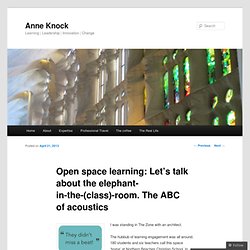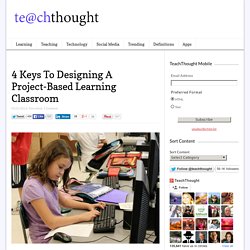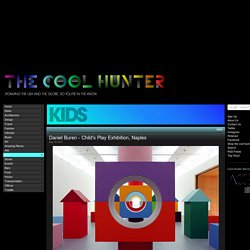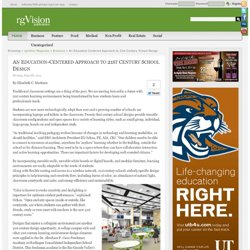

Www.contractdesign.com/contract/products/MooreCo-Sharewall-10431.shtml. Open space learning: Let’s talk about the elephant-in-the-(class)-room. The ABC of acoustics. I was standing in The Zone with an architect.

The hubbub of learning engagement was all around. 180 students and six teachers call this space ‘home’ at Northern Beaches Christian School. In front of us a teacher was taking a large group through a step-by-step process on a particularly technical aspect of uploading their work to the portal. This group of Year 5 and 6 students were focussed, sitting on the floor with their devices on their laps. To our right another group were sitting at tables, their heads down, working on a pen and paper task. After a few moments this group stood as one and picked up their work to relocate for the next activity. As we watched this happen the architect said to me, “They didn’t miss a beat, teachers tell us that open learning won’t work because the students are distracted.”
Many people cite noise and distractions as the reasons why open learning will not work. Acoustic effectiveness is personal. I was talking with another visitor in The Zone a while back. 4 Keys To Designing A Project-Based Learning Classroom - Traditional American classrooms tend to fit a particular mold: Students face the front of the class where teachers lecture.

Students take notes, finish assignments at home, and hope to memorize enough information just long enough to pass a test. Engagement and passion are often in short supply — among students and teachers. The system does not necessarily accommodate all learning styles, and even those who fair well may be missing out on other important work-life lessons, like how to creatively solve problems, stay focused, work as part of a team, and organize their thoughts in a way others will understand. This is where project-based learning enters the equation. What is Project-Based Learning? The Future Of Education Eliminates The Classroom, Because The World Is Your Class. This probably sounds familiar: You are with a group of friends arguing about some piece of trivia or historical fact.

Someone says, "Wait, let me look this up on Wikipedia," and proceeds to read the information out loud to the whole group, thus resolving the argument. Don’t dismiss this as a trivial occasion. It represents a learning moment, or more precisely, a microlearning moment, and it foreshadows a much larger transformation—to what I call socialstructed learning. Socialstructed learning is an aggregation of microlearning experiences drawn from a rich ecology of content and driven not by grades but by social and intrinsic rewards. The microlearning moment may last a few minutes, hours, or days (if you are absorbed in reading something, tinkering with something, or listening to something from which you just can’t walk away). Think of a simple augmented reality app on your iPhone such as Yelp Monocle.
Kids. In 2011, we wrote about the newly opened Shanghai Museum of Glass (SHMOG) designed by Coordination Asia’s founder and CEO, Tilman Thürmer.

More recently, Thürmer’s team completed the Kids’ Museum of Glass located in the same Shanghai-based complex and opened a few days ago. Cool and edgy, quite literally, the Kids’ Museum has none of the typical cute and cuddly kiddie features found in spaces dedicated to children. Instead, the target audience, kids aged 4-10, enter an environment of glass, particle board and metal realized in a color scheme of black and white sparsely livened up with lemon yellow, saturated pink and cool blue. The museum is designed to teach kids the basics of glass in a playful and fun way. The museum mascots, Bobo and Lili, guide children in their glassy hometown through various features, including The Beach, The Circus and The Factory. Everything is designed to be touched and interacted with.
Imagining the best learning space... Venture Lab. Learning Commons in BC. SPACE MATTERS. Best Practices in Educational Facilities Investments. Can the physical environment have an impact on the learning environment? Color. An Education-Centered Approach to 21st Century School Design ← rgVision Magazine. Browsing » rgVision Magazine » Business » An Education-Centered Approach to 21st Century School Design Monday, May 6th, 2013 By Elizabeth C.

Martinez Traditional classroom settings are a thing of the past. We are moving forward to a future with 21st century learning environments being transformed by how students learn and professionals teach. Students are now more technologically adept than ever and a growing number of schools are incorporating laptops and tablets in the classroom.
“As traditional teaching pedagogy evolves because of changes in technology and learning modalities, so should facilities,” said ERO Architects President Eli Ochoa, PE, AIA, CBJ. By incorporating movable walls, movable white boards or digital boards, and modular furniture, learning environments are easily adaptable to the needs of students. “Color is known to evoke creativity and daylighting is important for optimum student performance,” explained Ochoa. “Today’s kids are digital learners. Tagged under: